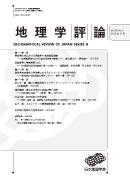Volume 88, Issue 6
Displaying 1-11 of 11 articles from this issue
- |<
- <
- 1
- >
- >|
ORIGINAL ARTICLES
-
2015Volume 88Issue 6 Pages 571-590
Published: November 01, 2015
Released on J-STAGE: October 05, 2019
Download PDF (2622K) -
2015Volume 88Issue 6 Pages 591-606
Published: November 01, 2015
Released on J-STAGE: October 05, 2019
Download PDF (452K)
RESEARCH NOTE
-
2015Volume 88Issue 6 Pages 607-622
Published: November 01, 2015
Released on J-STAGE: October 05, 2019
Download PDF (784K)
BOOK REVIEWS
-
2015Volume 88Issue 6 Pages 623-625
Published: November 01, 2015
Released on J-STAGE: October 05, 2019
Download PDF (454K) -
2015Volume 88Issue 6 Pages 625-627
Published: November 01, 2015
Released on J-STAGE: October 05, 2019
Download PDF (454K) -
2015Volume 88Issue 6 Pages 627-628
Published: November 01, 2015
Released on J-STAGE: October 05, 2019
Download PDF (450K) -
2015Volume 88Issue 6 Pages 628-630
Published: November 01, 2015
Released on J-STAGE: October 05, 2019
Download PDF (452K)
OBITUARY
-
2015Volume 88Issue 6 Pages 631-632
Published: November 01, 2015
Released on J-STAGE: October 05, 2019
Download PDF (815K)
MISCELLANEOUS RECORDS
-
2015Volume 88Issue 6 Pages 633-634
Published: November 01, 2015
Released on J-STAGE: October 05, 2019
Download PDF (172K) -
2015Volume 88Issue 6 Pages 635-638
Published: November 01, 2015
Released on J-STAGE: October 05, 2019
Download PDF (334K) -
2015Volume 88Issue 6 Pages 6_cover2-
Published: November 01, 2015
Released on J-STAGE: October 05, 2019
Download PDF (141K)
- |<
- <
- 1
- >
- >|
